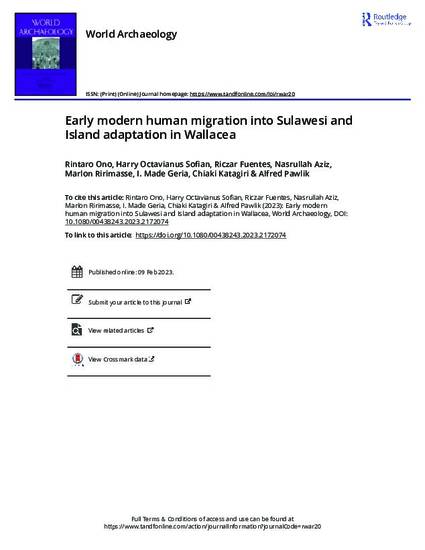
Article
Early modern human migration into Sulawesi and Island adaptation in Wallacea
World Archaeology
(2023)
Abstract
Maritime migration and island adaptation by anatomically modern humans (AMH) are among the most significant current issues in Southeast Asian archaeology and directly related to their behavioural and technological
advancement. In the center of this research hotspot are the Wallacean islands, situated between the Pleistocene landmasses of Sunda and Sahul. Two major migration routes have been suggested for the initial maritime migration from Sunda via Wallacea into Sahul, a northern route into the region of New Guinea and a southern route leading into northern Australia. Here, we report the outcomes of new archaeological research in Central Sulawesi, the most likely entry location for the northern route. Based on our latest findings and new C14 dates from Goa Topogaro 2, we discuss the evidence and timeline for the migration of early modern humans into the Wallacean islands and their adaptation to insular environments during the Late Pleistocene.
Keywords
- Human migration,
- Wallacea,
- Sulawesi,
- Pleistocene,
- Adaptation
Disciplines
Publication Date
Winter February 9, 2023
DOI
https://doi.org/10.1080/00438243.2023.2172074
Citation Information
Rintaro Ono, Harry Octavianus Sofian, Riczar B Fuentes, Nasrullah Aziz, et al.. "Early modern human migration into Sulawesi and Island adaptation in Wallacea" World Archaeology (2023) Available at: http://works.bepress.com/alfred-pawlik/25/
